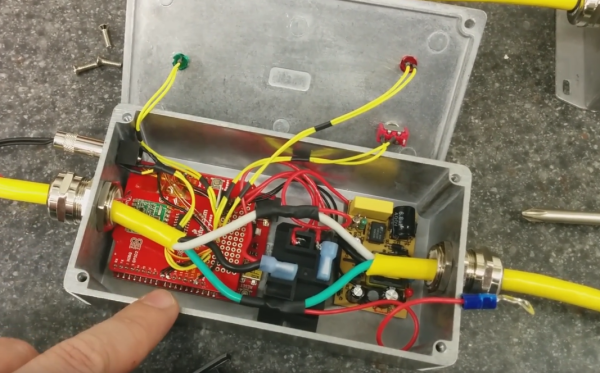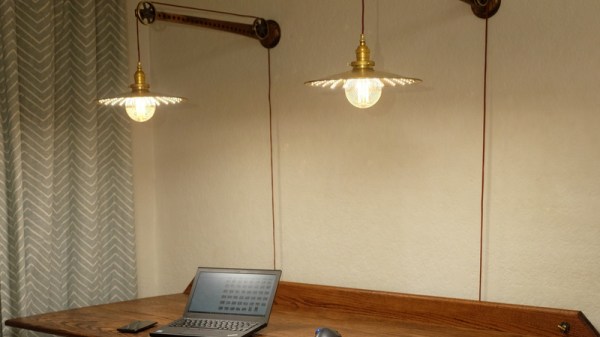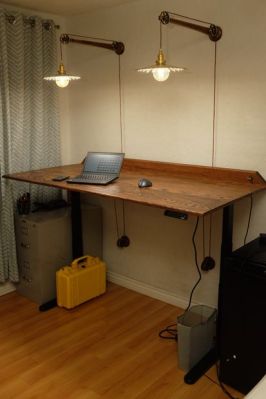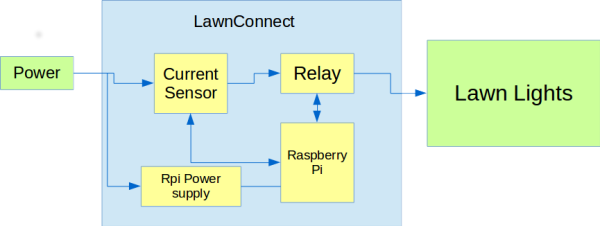Car lifts used to be a tool reserved for professional mechanics. Times are a-changing though. With the advent of reasonably priced four-post hydraulic lifts, more and more shade tree mechanics are joining the five-foot high club. Installing a lift in a home garage creates a few hazards, though. What happens when a family remotely opens the garage door while there is a car up on the lift? Garage door and lifted vehicle will meet – with expensive and/or dangerous results. [Joe Auman] saw this problem coming a mile away. He built the LiftLocker to make sure it never happens to him.
At its core, LiftLocker is a set of switched extension cords. Two cast-aluminum boxes hide the electronics. One box plugs in-line with the lift. The other box plugs in-line with the garage door opener. Each box includes a Sparkfun Redboard Arduino compatible, an RFM22 433 MHz Radio, and a relay. Input comes from a security system magnetic reed-switch. Both boxes are identical in hardware and code.
Operation is simple. One box and reed switch goes on the lift, the other on the garage door. If the lift is going up, its reed switch will open. The lift’s Arduino detects this and commands its RFM22 to send a signal to the other box on the garage door. Upon receiving this signal, the garage door controller will open its relay, disconnecting power to the garage door opener. Communication is two-way, so if the Lift controller doesn’t hear an ACK message from the garage door controller, everything will shut down. Click past the break to see the system in action.
Continue reading “LiftLocker Keeps Your Lift Safe From Attacking Garage Doors”



















